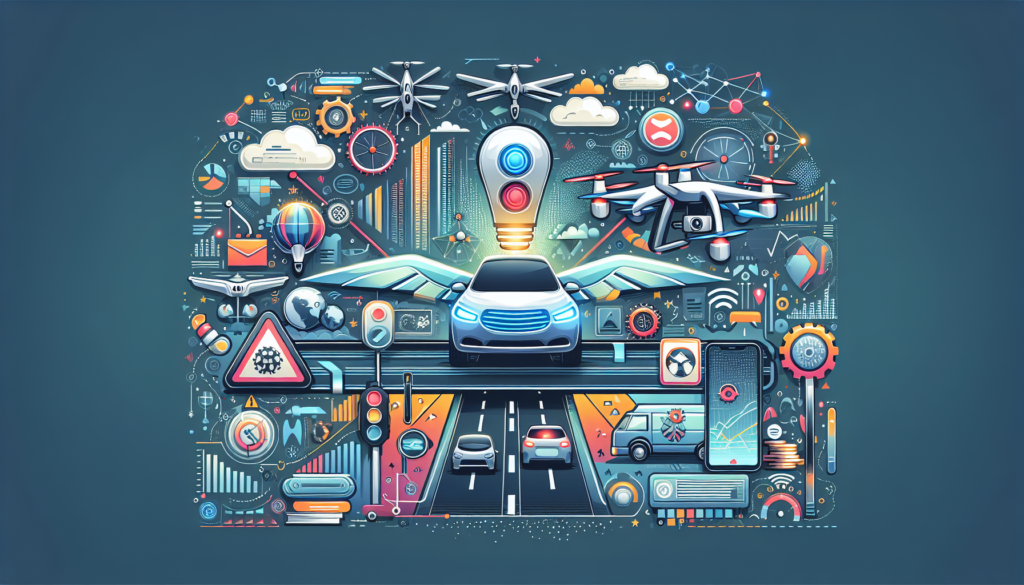The emergence of autonomous transportation and the widespread use of drones have transformed mobility, redefining regulations and demanding a rethinking of the regulatory framework at a global level. To keep up with these technological advances, it is imperative that legislation evolves in line with them, encompassing both the technical aspects of the design and operation of autonomous vehicles and drones, as well as considerations of safety, privacy, and legal liability.
Foundations and Scope of Autonomous Transport
Technical Aspects
Autonomous transport relies on the integration of advanced Artificial Intelligence (AI) systems, sensors, and data processing algorithms that enable vehicles to interpret their environment and move without human intervention. Key technologies include LiDAR (Light Detection and Ranging), 360-degree vision cameras, and high-precision mapping platforms.
Safety and Testing Protocols
Safety is paramount, which has led to the creation of rigorous protocols to evaluate the effectiveness of autonomous driving systems before their mass implementation. These tests range from virtual simulations to trials on closed tracks and, in advanced stages, testing in real traffic conditions.
Implementation Challenges
Despite technical advances, the effective integration of autonomous vehicles into the urban fabric faces challenges ranging from interoperability with conventional traffic to the standardization of V2X (Vehicle to Everything) communications.
Current Regulation in Autonomous Transport
Europe, United States, and Asia lead in the adoption of preliminary regulations; however, there are significant discrepancies between the regulatory frameworks of these regions.
Europe
In Europe, there is a focus on energy efficiency and emission reduction, with Regulation (EU) 2019/2144 establishing the technical requirements for vehicle homologation.
United States
The NHTSA (National Highway Traffic Safety Administration) in the United States advocates for a more flexible framework, allowing for rapid adaptation to emerging technologies through temporary exemptions and voluntary safety guidelines.
Asia
In Asia, progressive policies such as those in Singapore and China stand out, designing specific urban districts for the implementation and testing of autonomous technology.
Innovations and Trends in Regulation
The trend is clear: regulations are being developed that can dynamically adjust to rapid technological advances. This includes the integration of cybersecurity principles and risk mitigation strategies in the face of operational failures or malicious attacks.
International Homologation
There is an emerging consensus on the need for international homologation frameworks that facilitate the interoperability and standardization of autonomous vehicles in different markets. This could involve the adoption of unified technical standards.
Data Protection and Privacy
The privacy of data collected by autonomous vehicles is an evolving issue that requires special attention. Regulations such as the GDPR in Europe have set the groundwork for how personal data should be handled and protected.
Case Study: Autonomous Transport Pilots
Waymo in the United States and AutoX in China represent two case studies that illustrate the progress and current challenges. These pilot programs have provided valuable data to outline future regulations, showing how testing in real situations is crucial to shaping effective regulatory guidelines.
Drone Deployment and Regulatory Challenges
Technical Aspects of Drones
Drones, classified by their use and weight, require specific regulations to ensure that their operation is safe and efficient. They include everything from small devices for recreational use to larger UAVs (Unmanned Aerial Vehicles) for commercial applications.
Current Regulations
Current regulations focus on the management of airspace, drone registration, and operator certification. The FAA (Federal Aviation Administration) in the United States and the EASA (European Union Aviation Safety Agency) in Europe are pioneers in formulating specific guidelines.
Future of Drone Regulation
The future evolution includes managing drone traffic through UTM (Unmanned Aircraft System Traffic Management) systems and the possibility of operations beyond the visual line of sight (BVLOS) of the operator, which requires a more meticulous and complex regulatory framework.
Future Directions and Potential Innovations
International collaboration and the development of cutting-edge technology will be key to creating a universal regulatory framework for autonomous transport and drones. Artificial intelligence in regulation and the potential introduction of digital jurisdictions could be disruptive components of future legislation.
Paths for International Collaboration
Greater cooperation is expected among international bodies and a unification of criteria that allow for a coherent and global regulation that accelerates the safe implementation of autonomous transport.
Digital Jurisdictions
Emerging concepts such as digital jurisdictions, where operational and behavioral rules are programmed and enforced through digital systems, could transform the traditional regulatory approach, adapting in real time to the changing conditions of mobility.
Conclusion
In conclusion, the future of regulation in autonomous transport and drones is shaping up to be a dynamic field. The unification of international regulations, along with the adaptability and ongoing evolution of the regulatory framework, will be essential to address the security, privacy, and efficiency challenges that come with these technological advances. By aligning laws and standards with the cutting edge of technology, we will foster a new era in mobility that will change our cities and the way we move.

